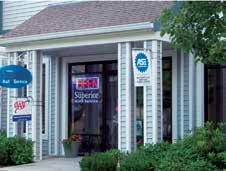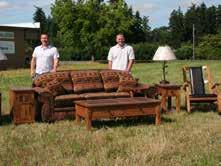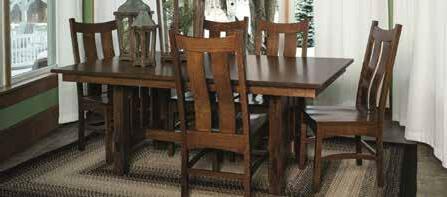













Gorgeous one level home in a serene setting. Enter this single level beauty to formal living/dining rooms before entering an open kitchen and eating nook. Beautifully finished sunroom leads directly into a large,private backyard w/conversation area and tons of room to entertain. Workshop, additional outbuilding landscaping, and garden beds are sure to delight. Large garage w/lots of storage and workspace, as well as newer furnace. This home is move-in ready and just waiting for you!



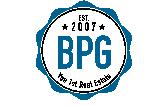

ADMINISTRATION
Matthew Nelson, Publisher
Catrina Nelson, CFO
Tara Weidman, Executive Assistant
Donovan Darling, Content Manager
PRODUCTION
Jeremy Okai Davis, Art Director
Stacy Benner, Sr. Graphic Designer

Holly Darling, Sr. Graphic Designer
Shawn Schmidt, Sr. Graphic Designer

Hilary Berg, Sr. Graphic Designer
CONTRIBUTING WRITERS

Tyler Francke Dennis McNabb
David Bates Robert Matsumura
Patti Jo Brooks Olive Gallagher
Angie Helvey Sherry Dorn
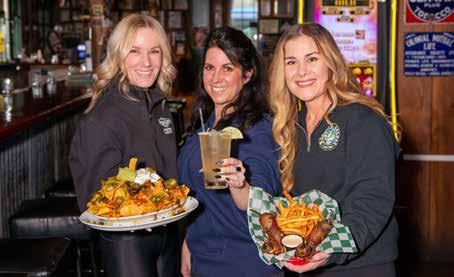
CONTRIBUTING PHOTOGRAPHERS
Carly Carpenter Kara Langley
Laurel Bice Hayley Starkey
Malaina Kinne Angie Helvey

Brittney Waterman Henry Schifter
Andrew Sambuceto Tyler Francke

ADVERTISING SPECIALISTS
Don Ormsby Bill Kistler
Stephanie Baker Jim Belan
Peggy Jacobs David Long
Chris O’Brien John Zobrist
Brad Marti Shelley Zeman
Tina Toney Darren Dwyer
Ashley Berotte Tim Gregos Looking

How long have you been part of the family business?
I’ve officially been the owner since 2019, but I don’t remember life without our store in it.
What’s your favorite part about running a hardware & building supply business?
The creativity, and being able to help people find that one specific thing they’re looking for. It’s satisfying.
When you’re not at work, what’s your favorite way to relax?
Well, soccer games, even when they aren’t relaxing. I try to make it to every Timbers and Thorns game! But I also love just watching TV dramas with my dogs.
Describe yourself in five words or less.
*sighs* Oh man...Quiet, loyal, helpful and honest. Uhm, and strong.
What’s something you wished people knew about small business?
I really wish people knew how much work our little team gives to this place. I think I speak for a lot of family-run places when I say it is literal blood, sweat and tears keeping it going, but we love it anyway.
These are the smiling faces of Clark Lumber Hardware - a family owned lumber and hardware store in the business of helping folks build since 1965.

Located on Tonquin Road in Sherwood, this small but mighty team is ready to help with whatever project needs you may have. Do not let their size fool you - collectively, their crew brings over 150 years of experience and knowledge to the table! This makes shopping at Clark Lumber Hardware a unique and personalized experience. How often can you say you had the president of a company ring you up at the register? You can at Clark’s!
Stacey Clark, a 1989 Sherwood High School graduate, grew up working afternoons and weekends at her family’s store. As a Sherwood native and now fourth generation business owner, she plans to keep the business motto, “we like to help folks build” going for years to come.
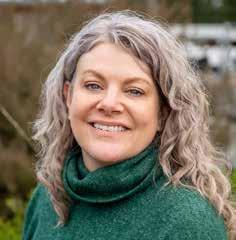
Clark Lumber Hardware was founded on a passion for helping people. “We don’t believe there is a single definition of the word project!” Clark jokes. Whether you are adding an entire room to your home or simply need to hang a few photo frames in the hallway, no project is too big or too small for the team at Clark’s. Even though it can be an intimidating field, Clark states the best part about the building supply and hardware industry is that, “you are always learning something new. Even if you are a master at one thing, there are countless new things to learn and experiment with.”
Clark Lumber Hardware is open weekdays from 7:00 - 5:00 and Saturdays from 8:00 - 4:00. If you are looking for supplies for that next project, or just need some inspiration, come check them out!
Clark Lumber Hardware is located at 11234 SW Tonquin Road. Connect with them on Instagram, Facebook or simply give them a call at 503-692-0200!
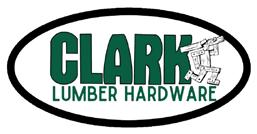
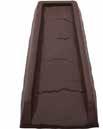


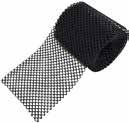

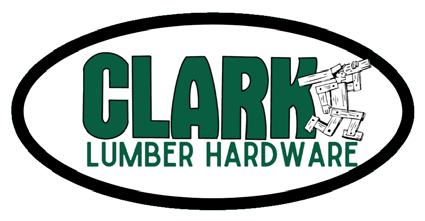
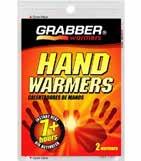


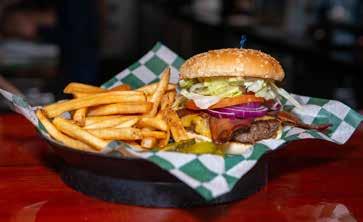 By Dennis McNabb, Contributing Writer
Photos by Carly Carpenter
By Dennis McNabb, Contributing Writer
Photos by Carly Carpenter
Owner JL Maixner bought the old Wanker’s Tavern off Borland Road in the 1980s. At that time, a busy night entailed having one or two locals stopping by after work for a beer, but JL envisioned something bigger, something special. Having once been referred to as a “Bloody Wanker” by a Welsh acquaintance, he became so enamored with the “nickname” that he adopted it (slightly altered) for his new establishment. Then he redecorated, punched out a wall, added
By the late ’90s, JL had collected so many antiques, knick-knacks, unidentifiable objects, and loyal followers, that moving to a larger building was an imperative.
a patio, and brought in a DJ on the weekends. Before long, he had lines out the door every Friday and Saturday night. It didn’t matter that the place was located in such a remote area; the food, service, and friendly atmosphere were so outstanding, people flocked from all over town.

By the late ’90s, JL had collected so many antiques, knickknacks, unidentifiable objects, and loyal followers, that moving to a larger building was imperative. Wilsonville had an undeniable charm. It was a beautiful area with easy accessibility and a fast-growing population, and he moved the entire operation there in 1998. The community was warm and welcoming and JL fell in love with his new “home.” Sadly in 2002, after a lengthy battle with leukemia, JL passed away, but his legacy lives on through his memory, his business, and his son, Cooper, who now runs it.
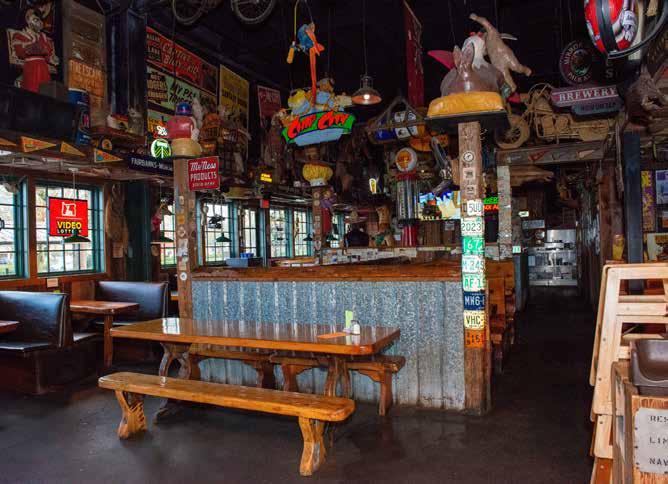
What enticed people in the ’80s and ’90s to drive from all over town is exactly what brings those same people and their families in today: great food, great service, and great atmosphere. Their most popular food items have always been their incredible nachos and burgers, but they have an impressively extensive variety, including salads, melts and wraps, “sammiches,” Tex-Mex, and even rice bowls, not to mention house specialties. As far as drinks go, the Wankerita is a favorite, though most people come in to choose from the 25 beers and ciders on tap that are constantly rotated. Whether you’re plagued by an empty stomach or just have a thirst to quench, Wanker’s is sure to satisfy your every craving.
As dedicated members of the Wilsonville community, Cooper and the staff at Wanker’s are genuinely grateful
for everyone’s support, particularly over these last few years. They have, of course, done their part–raising and donating $135,000 to the Oregon Food Bank, but that wouldn’t have been possible without their loyal customers.
Locally-owned and -operated by passionate people wanting to serve their community, Wanker’s Corner offers a one-of-a-kind experience!
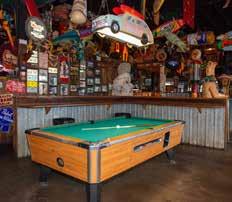


Wanker’s is located at 8499 SW Main St. in Wilsonville. For more details, call 503-682-9673 or visit wankerscorner.com. Follow them on Facebook for upcoming events and specials. Food can also be ordered through wedelivereats.com.

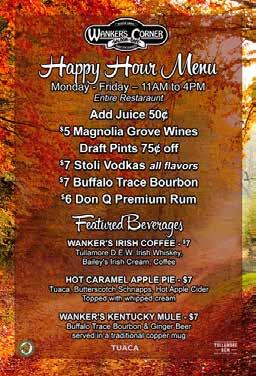
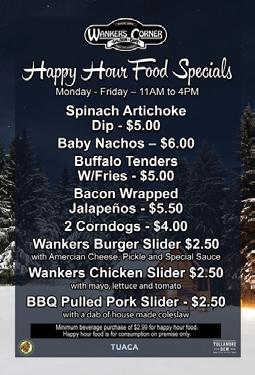


Winter is here, and that means it is the season for laser skin rejuvenation treatments. The treatments are non-invasive and often take only 15-30 minutes. With regular treatments, laser skin rejuvenation helps reduce the appearance of sun damage, dark spots, acne scars, and more. There are two competing laser rejuvenation technologies –MOXI and Halo. Figuring out which is appropriate for any given skin type can be a challenge. An in-depth consult from a trained Advanced Aesthetician or medical professional will help us understand the difference between the two lasers and which one is right for us.
MOXI Laser

Moxi is a non-ablative fractionated laser that converts electrical energy into light, to target pigment by creating tiny perforations in the superficial top layer of skin. These micro-injuries stimulate the dermal repair process, revitalizing tone and texture and reducing the appearance of brown and red spots caused by sun damage or aging. MOXI is a gentle non-ablative laser with minimal recovery time and little to no downtime. Moxi Laser targets fine lines, wrinkles, sun damage, melasma, enlarged pores, texture, and uneven skin tone – a wonderful solution for those looking to prevent signs of aging or work on minimal skin concerns.
HALO Laser
The Halo Laser is unique in that it simultaneously combines deep dermal rejuvenation, including collagen induction,
Dr. Roberta Huang MD, FACOG
Our team of medical specialists and certified Aestheticians have years of experience. They have been trained in the latest technology specifically to help our patients get the results they want.
with epidermal renewal, like refining the skin’s texture and removing discoloration. Unlike older lasers, which deliver energy either to the shallow layers or the deeper layers, but not both, Halo’s unique Hybrid Fractional Laser technology is able to emit both types of energy. The Halo Laser is a hybrid of ablative and non-ablative wavelengths and penetrates deeper into the skin for more dramatic results than MOXI. The recovery period is about 3 to 5 days, and patients may return to work with light makeup. In short, the Halo laser is the crème de la crème of skinresurfacing and collagen induction.
The bottom line: MOXI vs. Halo Laser Treatment
Essentially, if the condition of your skin reflects your age, the MOXI Laser is for you. It’s a great way to maintain your skin, prevent future damage, and treat small areas of concern. It’s made for all ages and skin types. The Halo Laser is the better option for you if you are looking to reverse years of aging, acne scars, or other skin issues. This is because the Halo Laser targets the skin at a deeper level than the MOXI Laser. Be prepared to invest in a little downtime (only 3 to 5 days). The great thing about Halo is that it gives greater results in less downtime than other lasers on the market with the same strength.

Lumera Regenerative Medicine is located at 6464 SW Borland Road, Suite C3, in Tualatin. For more information, visit lumeramedical.com or call 503-852-9680.












Difficulty:






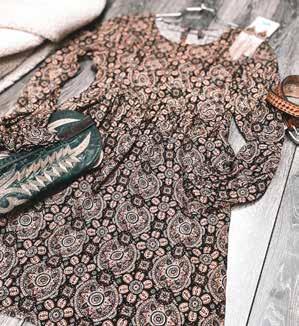




Primers range from face primers to eyeshadow primers, to even mascara primers. There are also specialty face primers with color correction, tints, or SPF. Some primers even add radiance and glow or help control oil. So it seems that there’s a primer for everything, and there’s a good reason for it, primers make the application of products after that much better and last longer!
Face primers are applied before foundation. Do I use one every single day? No. Do I use one every single time I want to look my best, have my makeup last, or am about to take photos? Absolutely.

Some of my favorite primers are made from medical-grade silicone, which creates a super smooth Photoshop effect on which the foundation is applied. So your skin is not suffocated by cheap ingredients, make sure your primer is non-comedogenic — AKA won’t clog your pores. You don’t need to use too much — about the size of a pea — and concentrate it more on the inner part of the face. As a professional makeup artist for brides, I absolutely use a face primer every single time I do wedding makeup, and I usually reach for the regular face primer from Glo Skin Beauty.


Eyeshadow primer has the same goal: to make a smooth even surface that helps the product that’s applied to last longer. Eyeshadow primers usually have a gentle tint to help even out the tone of the thinner skin on the eyelid.





Eyeshadow colors may appear differently if you’re applying them to eyelids that have visible veins or discoloration — this is most of us — so not only will it give your eyeshadow something to cling to, but it will also create an even canvas for applying the eyeshadow pigment. Eyeshadow primers also help with keeping eyeshadow in place and preventing it from falling below your eyes.
Mascara primers help maximize lash strength and health while adding volume, length, or both, to the lash before applying mascara. Our favorite also adds a little curl as well. Swipe one application before brushing on your favorite mascara.


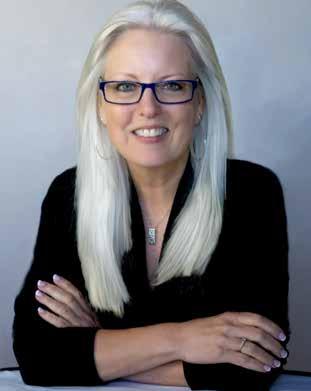









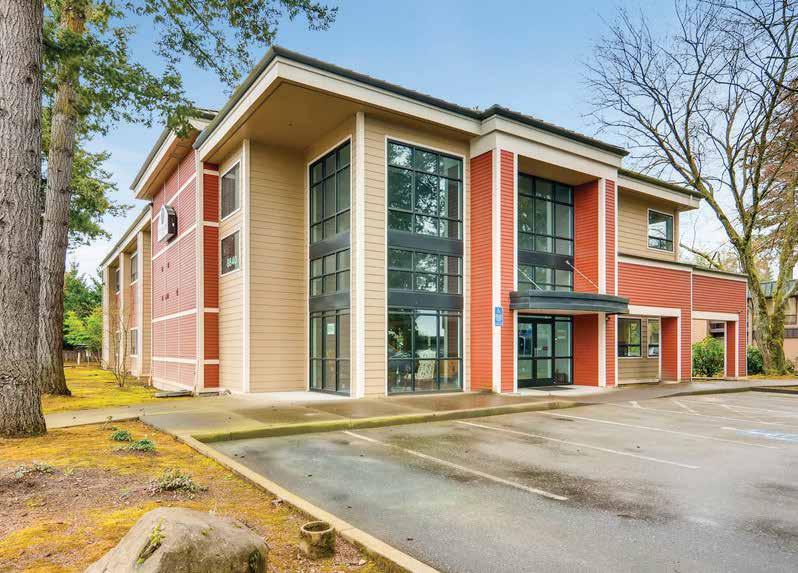




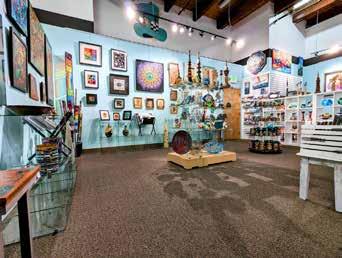
Heart-full Garland
FEBRUARY 3, 1 TO 4 P.M.
Class fee: $55 • Ages 12 and up
In this beginner-friendly class, learn this relaxing fiber art also known as soft sculpture. Needle felting transforms colorful sheep’s wool into 3-D sculptures using a special barbed needle. I will teach you how to use these needles safely so you can create a Heart-full Garland — up to seven hearts as time allows. Tools and supplies including a six-foot pre-strung garland.

FEBRUARY 4, 2 TO 4 P.M.
Ages 10 and Up
$4.99 Make ‘N’ Bake

Mont Marte “Make ‘N’ Bake” Polymer Clay, an easy-to-use, malleable non-toxic synthetic clay, can be hardened in your own oven. Ideal for press molds, pattern making, figure and doll modeling, canes, beading, jewelry and other sculptural projects.
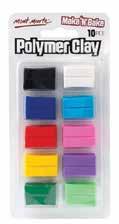

Dip your toes into the world of oil painting. These Mont Marte oils are suitable for use with linseed oils or other oil media. Recommended for use with Mont Marte Professional Series Chunking and Oil Taklon brushes. Also consider the Mont Marte Wooden Palette, Easy Clean Palette, or Mont Marte Disposable Palette.
$16.99–$24.99 IncrediBuilds
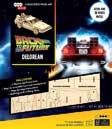
Build and paint these cool wood creations. Pick between the Ectomobile, The Millennium Falcon, R2-D2, or the Water Horse from Frozen II.
$16.99 Fountain Pen Set & Journal
Modern Script Fountain Pen and Journal set includes three black ink fountain pens in gold, rose gold, and silver, plus a 60-page gold and silver ombré-covered journal. The pens work with Splendid Fountain Pen refills and pairs nicely with Modern Graphite Pencils. Suitable for ages 12 and up.

Enjoy a fun class with Melissa Johnston as she shares with you how to create oneof-a-kind mandala by using dots! You will be creating on a six-by-six canvas. Class is appropriate for ages 10 & up and all skill levels. Please dress appropriately as the paint can stain clothing.

Peacock Spider Card

FEBRUARY 11, 1 TO 2 P.M.
Class fee: $45 • Ages 6 and up
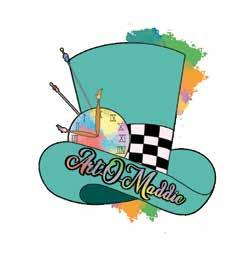
From dances to gift giving, some insects and spiders have creative ways of asking, “Will you be my Valentine?” Led by OSU research entomologist Heather Andrews, the class will teach these romancing arthropods After the lesson we will make peacock spider valentines.

FEBRUARY 11, 3 TO 5 P.M.
Cost: $50 • Ages 14 and up
Join artist Angela Hawes for a beginners-level paint class, step by step. Supplies will be provided for the 16-by-20 painting. No food or beverages provided, but bring your own if you wish.





Yes, Bill Schonely was larger than life. The legendary Portland Trail Blazers broadcaster illuminated any room in which he entered. The author and mayor of Rip City had hundreds of thousands of fervent admirers cast throughout the state of Oregon and southwest Washington. But Schonely, who died on January 20 at age 93, was also a humble man, private in some ways. He enjoyed nothing more than spending a quiet night at home with his high school sweetheart and bride Dottie. He met friends for an occasional lunch and/or dinner date, but he wasn’t a man about town, not in his latter years.
The Schonelys lived in the south Metro area through much of their marriage — first for nearly 20 years in Charbonneau, then for two years in Tualatin, and finally at The Springs at Lake Oswego. They loved the area. Bill and Dottie were natives of Norristown, Pa. Bill went off to the Marines, became a sergeant and was stationed in Guam, where he served from 1948-51. Schonz worked for Armed Forces Radio and got his first taste of football and baseball play-by-play. He was an excellent singer, big band style, and had strongly considered a career in music. But gradually, his interests shifted to broadcasting.
Schonely’s career began at a radio and TV station in Baton Rouge, La., in 1952. He called LSU football and basketball and even served as ring announcer for pro wrestling, once being sprayed with perfume by the valet of the great Gorgeous George’s. Schonz was eventually talked into getting into the ring and wrestling four or five times — and that wasn’t the end of his “rasslin” career.
In 1955, he landed a job in Seattle, staying there for 15 years. He worked with the likes of Keith Jackson at KOMO radio for a spell, called Seattle Totems hockey and Seattle Rainiers minor league baseball, and even got back into the ring for a couple more pro wrestling matches. He also got behind the pipes to play goaltender at a Totems practice, winding up with a shoulder injury that required a cast on his arm.
In 1969, Schonely called play-by-play for the Seattle Pilots in their lone season in the American League. When the Pilots moved to Milwaukee, he thought about joining them. Fate intervened. Harry Glickman called with an offer to do play-by-play for the expansion Trail Blazers. Schonely took the job, and the rest is history.
1977 championship team.
“From the beginning, he made people believe that what (the Blazers) were doing was worth their interest, their attention, their commitment and their loyalty. Those were all human elements that Bill Schonely had in boundless abundance.”
Schonely’s popularity in Portland — and make no mistake, he is the most important figure in franchise history — stems from a couple of things. One, coaches and players changed often throughout the course of 50-plus years of Blazer basketball. Schonz was the one constant through the years, beginning with the inaugural 1970-71 campaign and continuing through his retirement in April of 2022. He spent much time in the community, representing the Blazers at luncheons and banquets. He emceed countless charity events — mostly gratis — because he was asked to. “I had a hard time turning anybody down,” Schonely told me. His name associated with any event was a big deal in making it a success. During the summers in the early years, Schonely led a caravan throughout the state, visiting radio affiliates and spreading the Blazer gospel. Sometimes, he would take players along. “None of us ever turned down a request from Bill,” Walton says. “We would drive to Bend or Astoria or Pendleton. We would just be friends in the car. Bill would get us there. We would get to the event and Bill had organized it for us to meet with advertisers, sponsors and civic leaders. And Bill would put the show on. It was great to be a part of it.”
During his years as an ambassador for the team, he continued to perform the aforementioned duties, and also had game-night responsibilities. He would start out on the concourse, visiting with fans entering the arena. He would stop by 10 Barrel Brewing’s “Schonely Taproom” for a glass of Chardonnay and more interaction with fans. Then he would head to the suite level, where he would meet with sponsors and suite-holders, many of them starstruck to have a few moments with this iconic character.
For the next 28 years and 2,500 preseason, regular-season and postseason games, Schonely was the voice of the Blazers. His “Rip City!” catch phrase was instituted that first season, and now has become the avant-garde nickname for the city of Portland. In 2012, Schonely was honored with the “Curt Gowdy Award” for excellence in sportscasting at the Naismith Basketball Hall Fame induction ceremony in Springfield, Mass. “Bill was the most important Blazer of us all,” says fellow Hall of Famer Bill Walton, the lynchpin of the
Schonely enjoyed it all. Hundreds have photos with him on their cell phones or in photo albums. There will be other broadcasters as the Blazers continue to play in the NBA through the years. There may never be one as beloved, however, as Bill Schonely.
(If you’re interested in purchasing Kerry’s new book, “Wherever You May Be ... Now: the Bill Schonely Story,” go to kerryeggers.com, hit the “store” tab atop the page, fill out the order form, and it will be mailed to you. The book is not available in bookstores or where books are sold.)
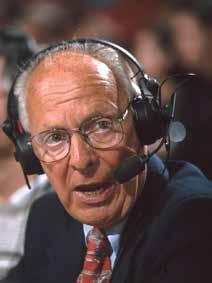


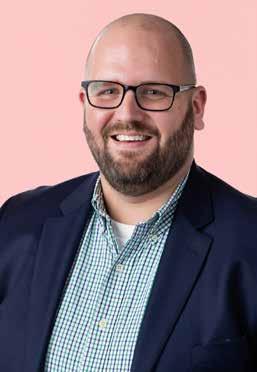

town in the far north to


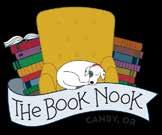

faerie folklore, where she discovers dark fae magic, friendship, and love, in this heart-warming and enchanting fantasy.





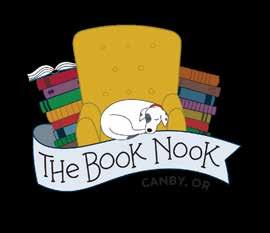

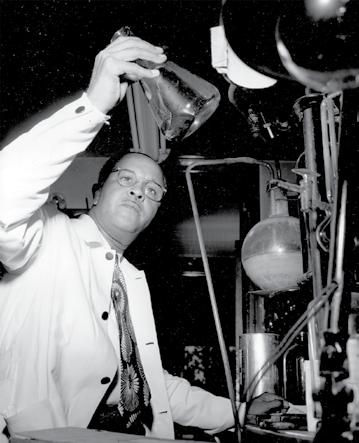
Wednesday, Feb 1 11am-12:30pm
Zoom
Come celebrate AfricanAmerican scientists whose work revolutionized the world in which we live. This program explores some of the accomplishments of ten remarkable men and women who should be household names.
Presented by Dr. Bill Thierfelder, Professor Emeritus and Docent at the American Museum of Natural History.
Sign up online to receive the Zoom meeting code.
Tuesday, Feb 7
Tuesday, Feb 21 5:30-7pm
Oak Room
City Councilor, and former mayor, Charlotte Lehan provides an indepth conversation about moments that shaped Wilsonville's history. No registration required. Light refreshments will be served.
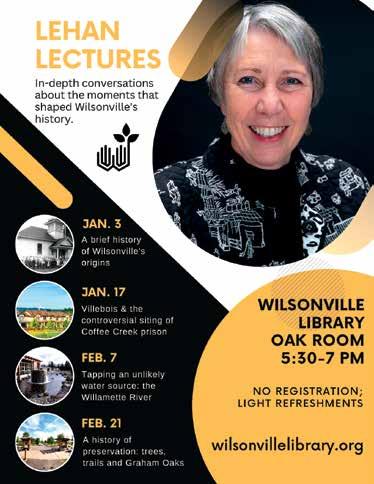
February 7
Tapping an unlikely water source: the Willamette River
February 21
A history of preservation: trees, trails and Graham Oaks
Tuesdays
Tue 7, 10:30am & 11:15am
Tue 21, 10:30am & 11:15am
Tue 28, 10:30am & 11:15am

Oak Room
Wednesdays & Thursdays
Wed 1, 10:30am
Thur 2, 10:30am
Wed 8, 10:30am
Thur 9, 10:30am
Wed 22, 10:30am
Thur 23, 10:30am
Oak Room
Wednesday
Wed 8, 1-3pm
Wed 22, 1-3pm Oak Room
Address 8200 SW Wilsonville Rd
Wilsonville, OR 97070
Hours
Monday - Thursday 10-8
Friday - Saturday 10-6
Sunday 1-6
More Information
(503) 682-2744
wilsonvillelibrary.org
reference@wilsonvillelibrary.org


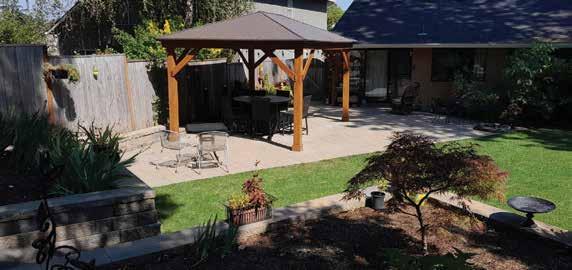








The Tater Tot. It’s hard to resist these crunchy golden-brown potato morsels piled high in a basket, or nestled on a plate accompanying our favorite burger or sandwich. For many of us, “Tater Tot” and “comfort food” go hand-in-hand. It’s ingrained in our culture—at least from a food perspective!
But did you know that these world famous potato nuggets were invented in Oregon, and that they were the creative byproduct of potato scraps originally used as cattle feed? The story of the Tater Tot traces back to two young Mormon entrepreneurs named Nephi and Golden Griggs who came of age during the Great Depression. Originally from Idaho, the Griggs brothers were potato farmers like most of their neighbors. Throughout the Great Depression and World War II, the Griggs survived by growing and selling potatoes, but during the postwar years as Americans increasingly turned to convenience foods—frozen foods in particular—the Nephi brothers were certain that their road to riches lay in servicing this growing demand.
Convinced that the future of produce resided in the frozen food section, the two brothers mortgaged their farms to purchase a flash-freezing plant in Northeastern Oregon for $500,000 (approximately $4.5 million today). As the factory was located on the border between Oregon and Idaho, they chose to name their new company Ore-Ida.
Corn and potatoes were Ore-Ida’s mainstay and the company soon became the largest distributor of sweet corn in the country, but the real profit lay in french fries. French fries, though immensely profitable, posed certain production problems. Nephi (the leader of the two brothers) described their challenge as follows: “We had a problem separating the fries from the slivers and small pieces of
potatoes that occurred when slicing the irregular shaped potatoes.” Instead of wasting the scrap pieces, the brothers had been feeding it to their cattle and other livestock.
Despite the fact that their potato scraps were being utilized as feed for farm animals, Nephi Griggs—always focused on efficiency and profit maximization—was bothered by their inability to derive any revenue from the constant flow of potato byproducts. In a letter to an OreIda colleague, Nephi vented his frustration at not putting to better use “product that has been purchased from the grower, stored for months, gone through the peeling process, gone through the specking lines and trimmed off defects, only to be eliminated into the cattle feed.”
An unexpected visit by a representative from an equipment manufacturing company, however, proved to be serendipitous. Although the company representative was there to demonstrate a prune sorter, Nephi and his plant superintendent envisioned utilizing the equipment in a different manner. Instead of sorting prunes, could the machinery be refashioned to sort irregular potato pieces from french fries? To their delight, it could.
It wasn’t long before the Griggs and their people at Ore-Ida devised a creative use for the supply of potato scraps. By smashing the bits together using new machinery, then blanching, forming the crushed potatoes into nuggets, and cooking them in oil, a completely new product was
created. These potato nuggets could subsequently be frozen, bagged, and distributed. Although the original idea was for the nuggets to be fried, it was soon discovered that baking them produced equally good results. According to Nephi, a man on their research committee who “traveled the markets playing a ukulele and demonstrating our product,” came up with the name. Unfortunately, the man’s name has been lost to history, though his talent for creative alliteration lives on. The name “Tater Tot” is iconic across the world for fun, palate-pleasing, potato goodness.
Nephi remarked in his notes (which are now housed at the J. Willard Marriott
“new product has about a three year
the “Tater Tot” name, purchased additional machinery, and began mass producing their tasty invention.


Despite the success of the Tater Tot, the process to create them was a bit of a sticky mess—literally. New equipment had to be fashioned to deal with the starchy potato product. Steel drums the diameter of a human torso rotated continuously filling tot-sized molds with potato. These molded potatoes would then be ejected onto a conveyor belt and sent down a line for seasoning and subsequent freezing.
Ore-Ida’s commitment to the Tater Tot, in spite of production difficulties, proved a gamble worth taking. The Griggs brothers’ promotion of their new product at the 1954 National Potato Convention was a huge hit, garnering interest in Tater Tots throughout the industry. The media was also quick to embrace Tater Tots as a convenient

new food for snacks and meals that was tasty and easy to prepare. So successful was the Tater Tot that Nephi referred to it as their “hero profit item,” and cited it as responsible for making Ore-Ida a household name. By the end of the 1950s, Ore-Ida had captured 25 percent of the domestic frozen potato market. A second plant was opened in 1960, and by 1961 Ore-Ida had gone public.
In 1964, despite generating an annual profit of $31 million, problems within the family necessitated the sale of Ore-Ida. The Griggs sold the company to H.J. Heinz in 1965 for $30 million. The Heinz purchase of Ore-Ida was the company’s first foray into the frozen food market. By the time Heinz merged with Kraft in 2015, the Tater Tot was so common of a product that few people realized the name was still trademarked to Ore-Ida. An advertising campaign was even created to differentiate OreIda tots from the competition. The campaign warned, “Don’t be fooled by Imi-taters,” because Ore-Ida Tater Tots were the “original and only.”
Today, as one of America’s cherished food items, Tater Tots have been incorporated in multitudes of home recipes and even elevated to culinary feature items at certain restaurants. There is no end of possibilities when it comes to something as versatile as the Tater Tot! So, next time you find yourself reaching for a crispy golden Tater Tot, think of the Griggs brothers and the Oregonian ingenuity that transformed cattle feed into a delectable treat enjoyed by millions.
 By Patti Jo Brooks, Contributing Writer
Photos by Andrew Sambuceto
By Patti Jo Brooks, Contributing Writer
Photos by Andrew Sambuceto

Canby Music welcomes Fender! Following a 2½ year delay from the original order date, this iconic guitar brand takes up its long-awaited place at Canby Music. Fender guitars, amps, basses, and everything else comprising the full Fender line has finally arrived. Canby Music is excited to be your local Fender dealership and offer “one of the biggest names in guitars.” With upwards of 100 guitars in the Fender line on-site, customers will have the luxury of selecting just the right instrument to fit their music style and level of expertise. Beginning with the Squier, a more affordable brand in the Fender line suitable for a beginner, moving up to the quality instruments crafted in Mexico, and ultimately the Made in the USA top-of-the-line Fender guitar. A complete inventory of amplifiers, everything from practice amps to full-stage tube amps are also available, as well as all the accessories—straps, strings, stands, and more. Don’t see something in the Fender line you’re looking for? No worries. Canby Music can order it for you!
Brian Haines, owner of Canby Music, began his business in 2008 on “kind of on a whim,” he relates. All through his 20s he had traveled on the road playing guitar in different bands. He enjoyed local success performing at fairs, rodeos, and casinos, and often performed weeklong gigs within the Western United States. On
his final road trip Brian had been gone 6 months, returning home at 29 years old. “This has all been fun and dandy,” he remembers thinking, but he also entertained the idea of settling down and having a family. Wanting to stay in music without traveling, Brian decided that “a music store would be the way to go.” He opened Canby Music in downtown Canby, and due to multiple requests he began teaching lessons as a service to the community. Along the way, band instrument rentals and repairs were also added.
After 10 years of growing business, Canby Music bought the “blue house” property in 2018 and began renovating. Completing much of the work himself, Brian opened the new location in September 2020, which includes: 4 lessons rooms staffed by instructors who teach multiple instruments, an instrument repair shop, band rentals, a high-end retail shop, and climate control throughout. In addition to more space, Brian expresses, “It’s nice and new, everything works.”
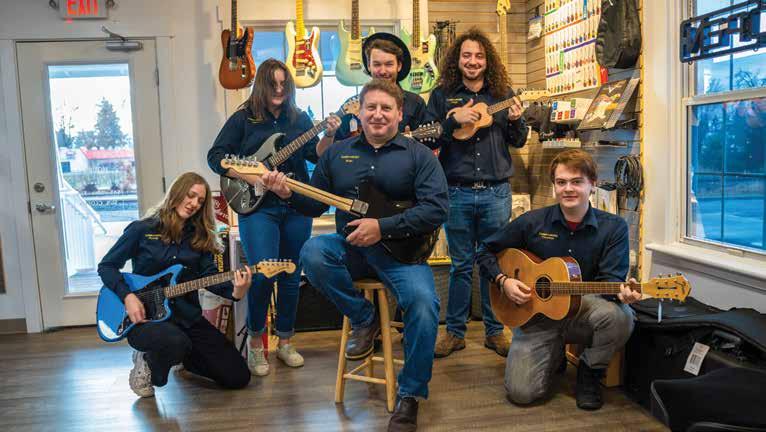
Canby Music hand-picks their staff of highly-qualified individuals. Nathan Doty, Repair Technician, started with Canby Music at the downtown location. Nathan is the school liaison, in charge of instrument repairs for all the local schools.
Christian Engerman, Studio Manager, teaches lessons and is responsible for lesson scheduling and billing. Lana Szenasi was “perfect” with her background in band and was assigned to school band rentals. Lana also teaches lessons and repairs instruments in the rental fleet. Ryleigh Mulhern, a school senior, came in with family and thought it would be “neat” to work in a music store. She sat and played their piano, the staff was impressed, and thought she’d be a good fit for the store. She teaches lessons and is their graphic designer. Cody McEldowney heads up Drums and School Percussion. He’s also in charge of the retail business, receiving and displaying products, and ringing up sales.
Brian continues teaching 20 or so individuals who’ve “been coming for years,” he says, “but mostly steers the ship


these days.” Living in Canby with his wife and 2 school-age children, both in Canby School District, Brian Haines knows what it means to be a local independent business owner and active community member. Brian, who’s originally from Canby, came up with the concept of Canby Music, and he states candidly, “This is as Canby as it gets.” He donates instruments and lessons to school auctions and equestrian events (showing support for his daughter who rides). He shops generously at the fireworks booth at Canby Music Boosters Club,
which raises money for high school and middle school bands. He is also a member of Canby Chamber of Commerce.
Stop by Canby Music today and check out their impressive inventory of Fender guitars as well as their other local brands such as Breedlove from Bend, OR. Don’t forget to ask about Free Financing!



Canby Music is located at 590 NW 1st Ave. in Canby. Call them at (503)263-2263 or email brian@canbymusic.com. For additional information visit their website at canbymusic.com.


The issue a lot of sellers (and some agents) are dealing with right now is that they haven’t accepted the fact that the market has shifted. Six months ago, it was a seller’s market. Enduring low inventory compounded with low interest rates meant sellers were getting over-asking price offers and closing in record time, often without even having to complete any repairs on their homes. The last couple of years have seen genuinely unprecedented conditions in the Northwest real estate market. But that has finally changed.
As forecasted by Jaimy Beltran, our resident real estate expert with the Beltran Properties Group at eXp Realty, that shift towards a more balanced market has arrived. Compared to this same time last year, we have three times the amount of available inventory in the Portland Metro market. And that trend does not appear to be slowing down any time soon.
The inventory remained so low for so long primarily because of the supply chain woes caused by the worldwide pandemic. With new construction slowing to a crawl, demand far outweighed the supply. Now that we are seemingly emerging from the worst of that situation, construction is slowly picking up. In addition, according to Jaimy, he’s seeing a lot of people who are simply having a change of heart. Priorities are being adjusted and people are looking to downsize and simplify their lives. There is also a general sense of people wanting to hurry up and sell to capture the highest potential
equity possible before the market shifts further. These factors and more are contributing to more inventory on the market.
It’s not just a matter of inventory though. All of the factors affecting the market are of course related, but today, buyers are also becoming much more selective. They are making demands on sellers asking for repairs to be done, or for allowances to do the repairs themselves. With more inventory they are afforded more choices, and that “frenzied buyer” of yesterday the one who offered the moon plus interest and their left arm, all while vying against a slew of others doing the same thing for the same property—no longer exists. To compare again to last year, Jaimy stated that in January of 2022, 40% of his listings sold in the first weekend after the home was put on the market. This year, only 9% have sold that quickly.
Interest rates are a factor as well. In January of 2022, average interest rates on a 30 year mortgage were in the 3s. Today, depending on your credit score, rates are at about 6.5%. That’s a significant increase which could considerably cut into any potential buyer’s purchasing power. As a result, buyers are not going to be willing (or able) to pay those higher prices sellers were asking just months ago.
Which all leads us back to the central point of this article: putting your house on the market at a reasonable and appropriate price point is essential in today’s market! Those first two weeks a home is on the market are the most critical. It’s during that

time when the most interest and excitement is generated. If you overprice yourself out of the market, chances are you may never recover. There is a distinct art to the process of pricing, one which has become lost in translation over these past couple of years. But make no mistake, your agent’s level of experience and expertise in this process is of the utmost importance.
Jaimy Beltran and his team at Beltran Properties have been in the business almost 20 years now. He has observed the market from just about every possible perspective and worked with clients in just about every possible scenario. There is very little that he and his team have not experienced. With his stellar reputation in the industry and his proven track record amongst clients, he is exactly the kind of agent you need in your corner right now. As a member of eXp Realty, he is also a member of a vast network of vetted professionals around the country who provide the same level of exceptional service that he and his team do locally. So, if you are looking for assistance with properties here in Oregon as well as out of state, there is no one better equipped to help.
Pricing your home appropriately in the current market is the only way to make the sale. You must acknowledge that the advantage sellers enjoyed 6 months ago is no longer viable. You must also acknowledge that in order to find the right price point, you must employ an experienced agent with a large listing of comparable homes. If you are interested in getting into the market, as a seller or a buyer, call Beltran Properties today!
Jaimy Beltran can be reached at 503-502-3330, or check out their website, beltranproperties.com.


Global supply chain shortages have changed the way Dick’s Canby Ford does business. With specific auto parts becoming more difficult to acquire, Chip shortages, and labor shortages, manufacturers are reorganizing production to prioritize customer retail orders. Instead of filling lots with cars, SUVs and trucks to meet demand, manufacturers are seeing better results filling custom orders for most customers.
For buyers, custom-order incentives, and the ability to purchase exactly what they desire, no more and no less, combined with the ease and flexibility of ordering from home, suggest an appealing future for auto sales. Dick’s Canby Ford has seen great success with prioritizing customer orders over having stagnate new car inventory.
So, what exactly are the rewards of custom-order Fords?
One of the most obvious benefits is gettng exactly what you want. With extensive options for trim, exterior, features, colors and more, there are thousands of customizations to be explored. It may seem intimidating at first, but Dick’s Canby Ford can help you check all the right boxes for your own personal tastes and needs. Why search for a vehicle that matches most of your preferences, when you can order one made especially for you.
Another benefit of hand-selecting your vehicle’s features is avoiding paying for add-ons you never needed or wanted in the first place. Custom orders allow you to build your new vehicle exactly the way you want it.

Although the production time might seem excessive, compared to simply driving it off the lot, custom orders may take less time than you think. In general, vehicles take eight to 12 weeks to produce and ship to the dealer.
For those who want to order a vehicle from home, creating a custom order is fast and easy. In most cases, you can finish the preliminary order in minutes. Once you’ve submitted your order through Dick’s Canby Ford’s online system, dealership representatives can efficiently help you with the rest of the painless process.
Since Dick’s Canby Ford now encourages custom orders, which then saves money on inventory manufacturing, the dealership offers incentives, such as a $1000 bonus cash offer on select custom models. Also, you’ll also be able to lock in interest rates, making a custom vehicle an intelligent financial investment.

Dick’s Canby Ford offers incentives, such as a $1000 bonus cash offer on select custom models.









